[Home Theater Network HDAV.com.cn] Dolby Atmos multi-channel cinema system is currently in use around the world, commercial theaters in mainland China can also be experienced.
Dolby Atmos, launched in April 2012 by Dolby Laboratories, is a new cinema audio platform that revolutionizes the entertainment audio experience. It brings a powerful new listening experience to moviegoers through more natural and realistic sound effects, and truly surrounds the audience. As an end-to-end solution, Dolby Atmos enables divers, film studios and publishers to dramatically enhance the movie sound experience, making it easier for content creators to create lifelike soundscapes without having to worry about the theater configuration or the number of speakers .
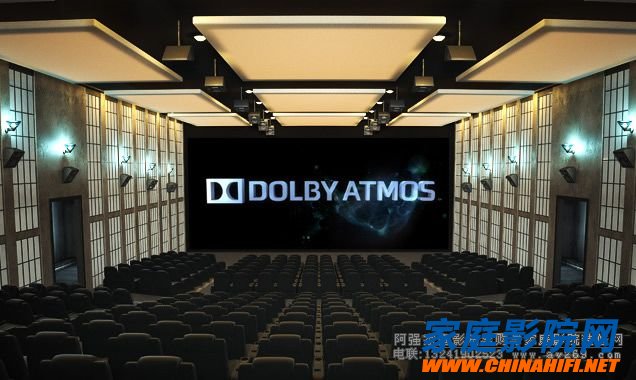
Dolby Atmos launched only a few months, which is supported by the global film industry. In 2012, the Hollywood Film Company released six films featuring Dolby Atmos, and several Dolby Panorama films were released in 2013. In China, in 2012, four Chinese-language blockbusters were produced using Dolby Atmos; in 2013, more Chinese-language blockbusters will feature Dolby Atmos. With the continuous launch of Dolby Atmos, more and more theaters are considering upgrading their swords to have Dolby panoramic sound playback capabilities, or considering Dolby Atmos.
This article will provide a quick design reference for cinema planning to help the theater determine the optimal placement of the speakers for the highest quality Dolby panoramic sound playback.
This article does not address the requirements for the design, picture size, acoustic design, speaker installation, safety or other specifications (such as architectural and electrical specifications) of the studio.
Dolby Panoramic Sound System Design
1, the screen speaker
1.1 Placement and height
The center speaker should always be placed on the center line of the screen, regardless of where the screen is located in the movie theater. In a traditional theater, the screen speaker on the left and the screen speaker on the right should be placed between the 1.85:1 (widescreen) and 2.39:1 (distorted widescreen) images. For screens with a screen width of more than 12 meters, adding two screen speakers will help achieve a smoother sound movement across the entire screen. After adding two speakers, place the left center speaker (Lc) and the right center speaker (Rc) between the center speaker and the left screen speaker and the right screen speaker. It is also recommended to use the same speakers in each of the above locations.
In a traditional movie theater with the same height, the screen speaker should be placed vertically and the acoustic center height of the speaker should be placed at about 2/3 of the height of the screen.
The acoustic center of each speaker will vary depending on the type of design, but typically, the acoustic center of the two-way screen speaker is at the midpoint of its horn, and the acoustic center of the three-way screen speaker is at the intermediate and high frequency horns.
In a movie theater with a constant screen width and a top movable cover, the left and right screen speakers should be placed on the inside edge of the screen. Due to the variable height of the picture, some compromises have to be made in the vertical position. Dolby recommends setting the acoustic center at the center of the 2/3 height of the widescreen screen (1. 85:1) and the 2/3 of the height of the anamorphic screen (2. 39:1) (eg Figure 1).
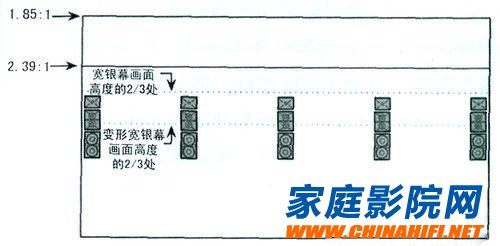
Figure 1 Screen position of the screen speaker in a movie theater with a fixed screen width and a top movable cover
1. 2 orientation
The screen speaker should be rotated horizontally so that the center axis of the speaker can point to a position that intersects the centerline of the picture at 2/3 of the length of the theater (starting from the screen). For speakers mounted on the wall of the pole, only the horn of the speaker is rotated, and the woofer is still level with the wall of the pole (as shown in Figure 2).
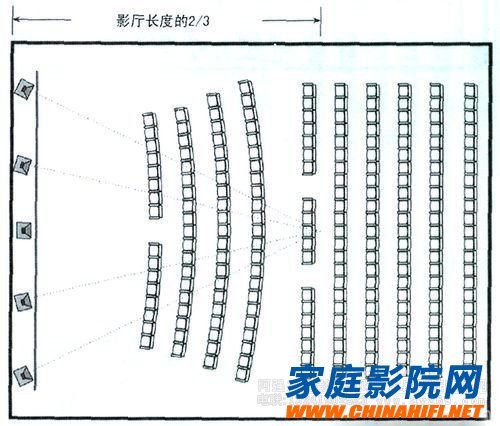
Figure 2 The horizontal direction of the screen speaker is pointing
The orientation of the screen speaker horn should be able to achieve optimal audience sound coverage. There are many factors that can affect the sound coverage, including the vertical scattering characteristics and height of the speaker, the length of the theater, and the slope of the auditorium. The theater needs to refer to the speaker manufacturer's product description to set the speaker's downward elevation angle so that the theater can achieve optimal sound coverage (as shown in Figure 3).
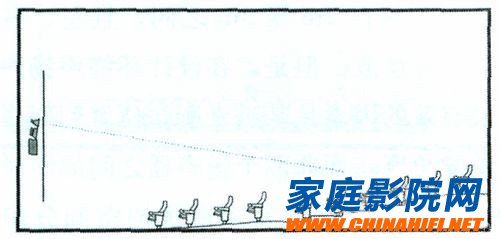
Figure 3 The downward directional angle of the screen speaker horn
1.3 screen woofer
The woofer for playing the low frequency effect (LFE) should be installed at the position where the back of the screen meets the back wall or flush into the screen wall. When using multiple subwoofers, Dolby recommends putting them together to enhance the sound through coupling effects. Do not place the woofer symmetrically along the centerline of the theater to avoid standing waves (low frequency resonance in the room).
2, surround speakers
2.1 Added Surround Speakers
One of the main differences between Dolby Atmos and Dolby 7.1 surround or 5.1 surround sound is the placement of the surround speakers. Dolby panoramic sounds pinpoint sounds from anywhere in the studio. To achieve this, add some surround speakers to the side walls and ceiling of the studio. The surround sound speaker on the side wall is placed from the position of the previously recommended movie theater 1/3 length (starting from the screen), and the surround sound speaker is extended to the position closer to the screen and then placed on the back wall of the room. The top surround speakers should be installed as shown in Figure 4 and the top speaker placement and top surround speakers orientation recommended in this article.
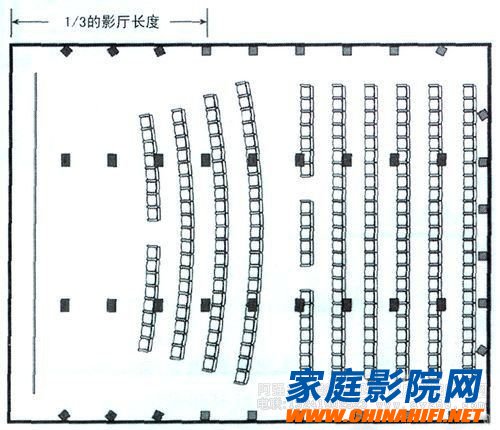
Figure 4 Placement of Dolby panoramic surround sound speakers
2.2 The spacing between the side walls of the cinema and the surround speakers of the rear wall
As a rule of thumb for medium-sized cinemas, the spacing between the surround speakers should be between 2m and 3m, and the left and right surround speakers should be placed symmetrically. However, when designing the spacing of surround speakers, the most effective factor is the angle at which a listener is located to the angle between two adjacent speakers, rather than the absolute distance between the two speakers. Welcome to the home theater network shopping guide network!
In order to achieve optimal spatial resolution in the entire theater, the angle between the edge of the central listening area and the center line of the studio should be no more than 30°. The central listening area refers to an area located in the middle of a position wider than the nearest quarter of the wall, as shown in the gray area of ​​FIG. Speakers adjacent to the auditorium should be kept as linear as possible. The spacing between the surround speakers outside the listening area (for example, the area between the first row and the screen or the corner of the back wall of the studio) may be slightly wider. If the surround sound speakers used have limited output power, more speakers are needed to achieve the desired sound pressure level.
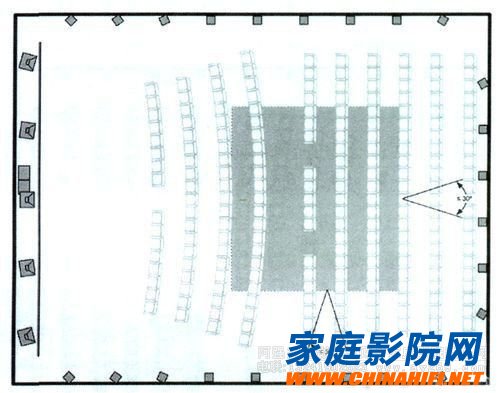
Figure 5 Angle between the main listening area and adjacent speakers
2.3 Height of the theater side wall and rear wall surround speakers
Surround speakers that install the side and back walls of the studio should follow these guidelines: The height of the side wall surround speakers closest to the screen should be the same as the height of the center of the screen speaker source.
The height of the rear wall speaker should be such that the height of the speaker placed on the back wall of the studio should be the same as the relative height of the surround speakers closest to the screen – the side wall and rear wall surround speakers rise parallel to the seat slope. When conditions permit, the speaker should be placed at a height that is inaccessible to the viewer to prevent the speaker from being damaged, stolen, etc. The speaker should be placed at a sufficient height to better cover the auditorium. It is recommended to be 1/4 of the width of the cinema. The side wall surround speakers should be vertically oriented on the line connecting the surround speakers closest to the screen speakers to the back wall surround speakers.
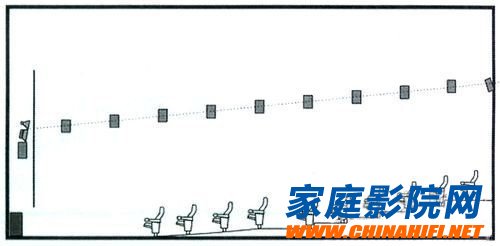
Figure 6 Height of the theater side wall and rear wall surround speakers
2.4 Orientation of the surround sound wall of the cinema and the rear wall surround speakers
The surround speakers on the side of the studio should be properly adjusted for the height angle so that the axis points to the height of the ear at the farthest seat on the other side of the theater.
The surround speakers on the back wall of the studio should be properly adjusted to the height angle so that the axis points to the height of the ear where the audience is seated in the first row of seats in the theater.
The horizontal angle of the side wall surround speakers located in the front area of ​​the auditorium and the surround speakers on the corners of the back wall should be adjusted to the center of the auditorium and subject to the following restrictions:
The horizontal angle of any speaker must not exceed 45°.
The side wall surround sound speakers along the main listening area of ​​the auditorium should maintain the center axis perpendicular to the longitudinal centerline of the cinema at a horizontal angle.
The rear wall surround sound speaker located in the auditorium's main listening area should keep the center axis parallel to the longitudinal centerline of the cinema at a horizontal angle.
2.5 Placement of surround speakers in the theater
Two rows of speakers should be installed on the ceiling of the theater, from the screen to the back wall. In the general theater, the two columns should correspond to the screen channels of the left middle speaker (Lc) and the right center speaker (Rc). The top speakers should always be symmetrically centered on the screen. The design features of the top speakers should be consistent with the surround speakers on the side and back walls to ensure uniform sound.
The number and spacing of the top surround speakers should match the placement of the surround sound surround speakers in the studio. It is important to ensure that the projector's light path is not blocked by one or more top surround speakers.
The horizontal position of the two columns of speakers should be able to optimize the spatial envelopment and uniformity of the entire listening area. As stated in the previous question, aligning the two columns of top surround speakers with the left and right center speakers usually provides satisfactory results. However, in a theater where the auditorium is much wider than the screen or the top surround speakers are installed much higher than the upper edge of the screen, it is best to separate the top surround speaker arrays wider (as shown in Figure 7). .
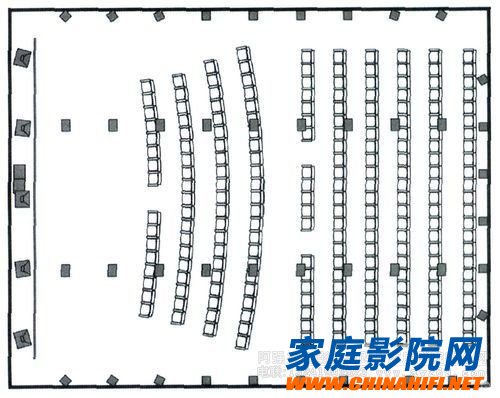
Figure 7 Placement of the surround speakers on the top of the theater
The minimum spacing between the two columns of top surround speakers should match the spacing between the left and right screen speakers and the right center screen speaker. The maximum spacing between the two columns of top surround speakers should be referenced to the following elevation angles.
Let E be the height angle of the nearest side wall surround sound speaker from the reference point (2/3 in the theater, the center position of the auditorium). The height angle of the top surround speakers on the same side of the column should be greater than or equal to half of E and 45° (45° + 1/2E), as shown in Figure 8. For example, if E is 20°, the height angle of the top surround speakers on the same side should be greater than or equal to 55°.

Figure 8 Maximum separation between surround speakers at the top of the studio
2.6 The orientation of the surround speakers on the top of the studio
For optimal sound coverage, the horizontal surround speakers of the studio should be horizontally angled (along the entire
The width of the theater is adjusted so that the axis points to the horizontal position of the speaker and 1/2 of the distance between the center line of the theater, as shown in FIG.
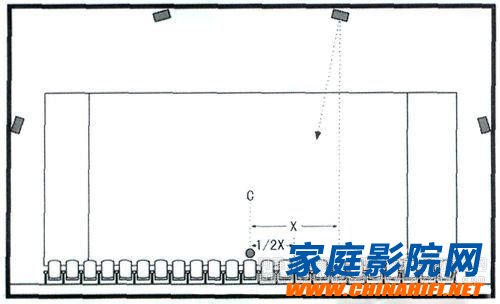
Figure 9 The outer corner of the surround speaker on the top of the studio
The longitudinal angle of the top surround sound speaker (along the length of the entire theater) should be adjusted according to the angle setting of the side wall surround speakers. Let 0° be the angle at which the speaker is facing vertically: the longitudinal angle of any speaker must not exceed 45°. The longitudinal angle of the top surround sound speaker located outside the main listening area of ​​the auditorium should not exceed 30°. The longitudinal angle of the top surround sound speaker located in the main listening area of ​​the auditorium should be maintained at 0°.
2.7 Cabling of Surround Speakers
All surround speakers should be wired to the position of the amplifier and powered separately. A speaker is directly connected to a power amplifier channel.
3, surround woofer

Figure 10 Placement of surround woofer
When the sound image position of the sound moves between the screen speaker and the surround speaker area, if the bass management of each speaker is consistent, the consistency of the sound can be greatly improved. However, general surround speakers do not have the ability to play back signals at frequencies well below 100 Hz. Dolby found that if you use the bass management system to redistribute the low-frequency portion of the signal sent to the surround speakers to a pair of stereo subwoofers on the back wall of the studio, you can enhance the performance of the surround sound at low frequencies. The low frequency information of the surround area of ​​the left half of the studio will be redistributed into one or more subwoofers located at the left rear of the theater; likewise, the low frequency information of the surround area of ​​the right half of the studio will be re-divided The distributor is located in one or more subwoofers on the right rear of the theater. The following is the placement guide for the surround woofer in the studio: place the woofer at the side wall of the theater, the back wall or the ceiling for 1/3 of the rear wall of the self-shadow hall. There should be sufficient separation between the woofer in the left surround area and the woofer in the right surround area. Avoid placing the woofer on the corners at the back of the studio – this will minimize the low frequencies that the room excites. The minimum distance between the surround woofer and the corner of the back wall of the studio should be kept above 1m. More fresh and fun home theater information, please pay attention to home theater network http:// (WeChat: cnhifi), the country's most influential home theater audio player interactive media website.
Note: This article was transferred from Aqiang Home Theater Shopping Guide. The article is an independent view of the author and does not represent the position of the home theater network.
|
About PEW Enameled Copper Wire. |
According to design of motor, transformer and high-speed winding machine, PEW product has the advantages of good paint film continuity, good flexibility and adhesion. high surface strength. breakdown voltage is increased by 60% compared with national standard. Suitable for manual and automatic winding machine .

Oxygen free copper covered polyester painting, Inner packing PT25/60/90/200 Plastic Spool.Outer packing: Carton box + Mooden box.
Insulated Copper Wire,Pew Enameled Copper Wire,Polyester Enameled Copper Wires,Enameled Copper Magnetic Wire
HENAN HUAYANG ELECTRICAL TECHNOLOGY GROUP CO.,LTD , https://www.huaonwire.com